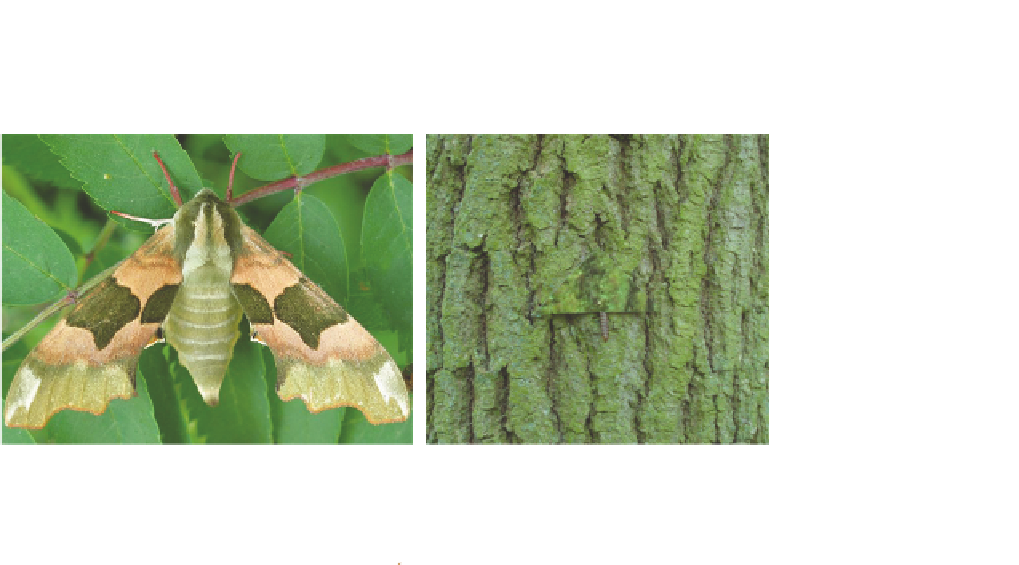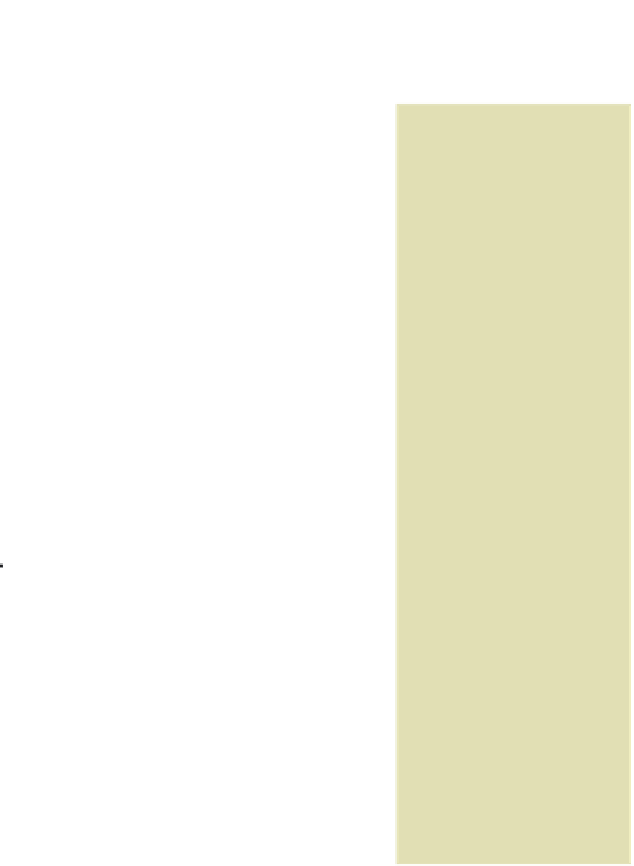Biology Reference
In-Depth Information
(a)
Fig. 4.9
(a) (i) Disruptive
patterns on the
wing margins of this
lime hawk moth
conceal the body
outline. (ii) An
artificial moth with
cardboard wings
and a mealworm
body, pinned to a
tree trunk to test
the effects of
disruptive patterns
Photos © Martin
Stevens. (b) Results
of a field experiment
with artificial moths
(see text). Disruptive
patterns increase
survival beyond a
cryptic pattern,
which in turn
survives better than
plain black or brown
wings. From Cuthill
et al
. (2005).
Reprinted with
permission from the
Nature Publishing
Group.
(i)
(ii)
(b)
TREATMENT
% SURVIVAL
AFTER 24 HOURS
Disruptive:
edge markings,
plus crypsis
95%
Cryptic:
markings inside
wing edges
75%
Black
42%
Brown
30%
Countershading
When a uniformly coloured prey is illuminated by sunlight from above, its ventral
shadow betrays its body shape, so even a cryptically coloured prey will be conspicuous to
a visually-hunting predator. Many prey appear to solve this problem by countershading,
namely darker colouring on the dorsal surface (or whichever surface is normally exposed
to the light). The ventral shadow now combines with the darker dorsal surface to give the
body a uniform brightness. For a caterpillar, countershading gives it a 'flat' appearance
and enhances crypsis against the leaves on which it is foraging (Fig. 4.10a). Experiments
with artificial caterpillars, made from pastry, show that countershaded prey do indeed
survive better than uniformly coloured or reverse-shaded prey (Fig. 4.10b).
Concealing
shadows
Masquerade
Masquerade involves resemblance of inedible objects such as twigs (stick insects, many
caterpillars), leaves (many insects), bird droppings (some caterpillars), flowers (some
spiders and mantids) or stones (plants of the genus
Lithops
). Prey presumably benefit
Resemblance of
inedible objects





































